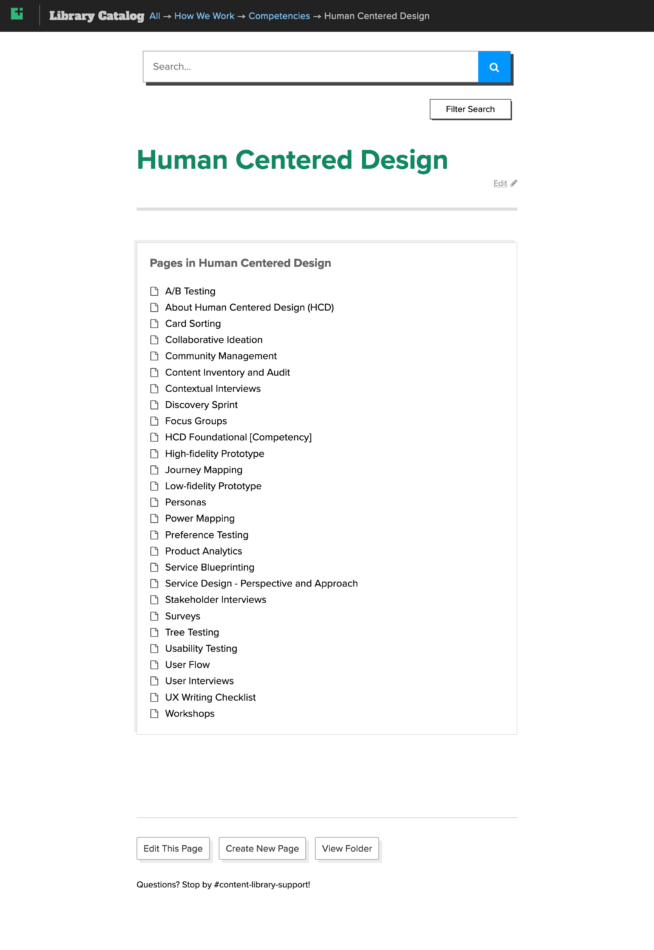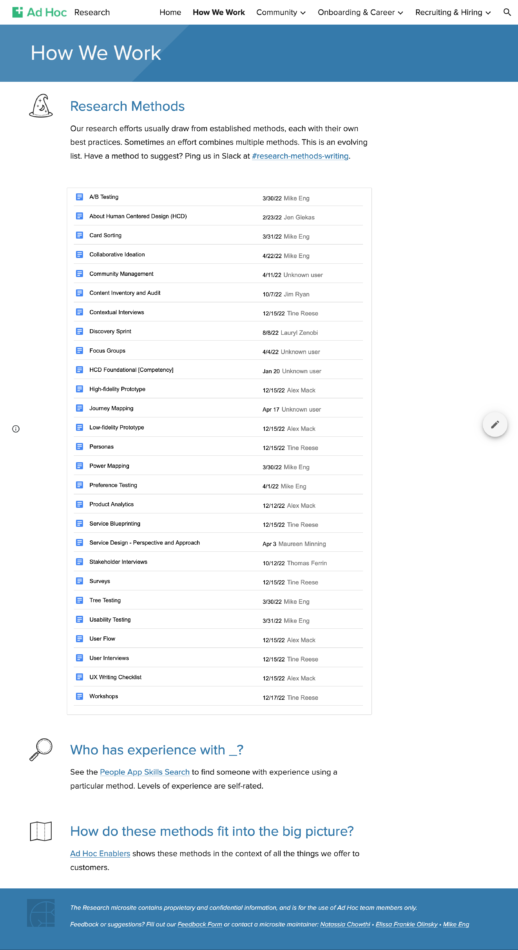My role
Project manager and editor, working with a handful of other human centered design practitioners at my company.
Activities
- Project management
- Content strategy
- Editing
- Writing
- Accessibility audit
Our team does a lot of research work, but not everyone knows what we do
Ad Hoc is a digital services company that helps the federal government better carry out their work on behalf of the American people. Human centered design and particularly user experience research have been a major part of what distinguishes us among other government contractors, and we have many skilled practitioners, but no one had documented how we do what we do in a cohesive way.
Our growth team was looking for content and case studies describing our methods, for use in new business proposals. And we wanted to make it easier for practitioners to learn from best practices and have more methods at their disposal, in order to deliver more value to our government customers.
What we were going for was something like an internal version of 18F’s Methods with the addition of case studies tied to each method, set up for our team members to be able to edit once and publish to multiple places.
The only kind of writing is rewriting
(quote: Ernest Hemingway)
My manager tagged me in midway through this project to get it across the finish line. We had a research method template, a spreadsheet tracking progress, a start of a peer review process, and a handful of methods written with varying approaches to style and length. In a month, I organized team members with particular expertise in some methods to fill in the gaps, standardized the style and length of all the methods, combined and split certain methods, improved the accessibility of the method template, finalized the approach to internal publishing, met with and guided people through the rest of the steps to be done.
At one point, we had one method for Concept Generation and another for Collaborative Ideation. They started off as distinct but then converged, so I merged them. The initial template highlighted key information like related methods, time needed, and materials needed, but there were accessibility issues with the way tables were structured, so I improved this by ensuring that all tables had header rows, taking non-tabular content out of the tables, and structuring headings appropriately.
Create once, publish in a couple of places
The methods are in a Google Drive folder that dynamically populates an internal content library and a research team microsite.


An individual research method page gives a concise overview of what the method is, why you might want to use it (and some drawbacks or situations where you might not want to use it), when and how to apply it, and case studies where we’ve had success with it.
Standing the test of (a little) time
Our growth team has drawn from the examples on an ongoing basis, and practitioners have sent links to each other referencing the methods when someone is trying to gain more experience with a technique. In the 18 months since I wrapped up the bulk of this effort, the folder and documents are still intact and publishing to where they should.